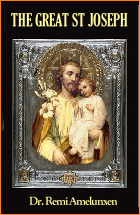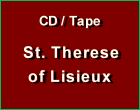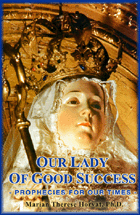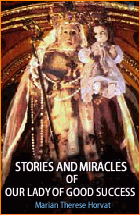Special Devotions
 |
 |
 |
 |
 |
 |
 |
The Little Drummer Boy:
A Magnificent Vocation!
In this very beautiful presentation, we beheld these poetic Magi Kings with their turbans and exotic paraphernalia, but this boy is even more poetic than the Magi Kings.
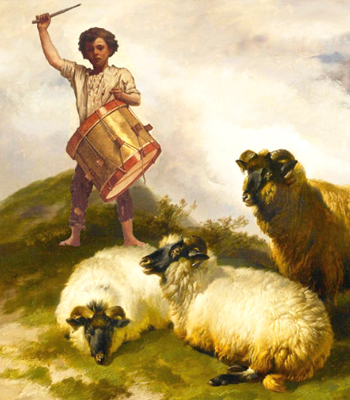
A boy with a vocation to play his drum
He knew only his elderly father, whom he honored with the traditional Eastern ceremony. From his father, he received just one present in his life, a drum. But it came with a gift of greater worth than anything else he might have received, that is, the capacity of soul to enjoy that one present, a drum. This is worth more than a thousand presents.
In these circumstance, he becomes a composer, playing his drum, producing harmonic tunes and melodies. What a marvel! How much better off he is than a rich boy with toys without end! Yes, he plays, although he has no one with whom to play.
But he finds a beautiful solution: He learns about the Infant Jesus and so he goes to play his little drum for Him.
The figure of this boy carrying his little drum to play for the Infant Jesus is touching. He goes to play his drum for Him to Whom the Angels, in the highest heavens, are singing inestimable symphonies. Hearing this drum, the Infant Jesus opens His eyes and mercifully captivates this drummer, this soul. Perhaps this drummer was the first friend of the Infant Jesus. What a wondrous vocation!
Depictions of Our Lord that touch the soul
All of this is indeed touching, but if one considers this episode from another viewpoint, it is even more moving.
We are accustomed to think of the Infant Jesus lying in the manger awaiting all who approached Him there. Indeed, the Infant Jesus was in the manger and persons went there to adore Him: the Magi Kings, the shepherds, obviously Our Lady and St. Joseph, and other passers-by. This is the historic reality.
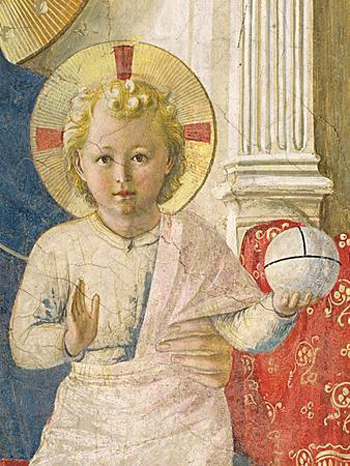
Our Lord attracts some souls with his innocence of childhood; others are moved by his Face in the Passion
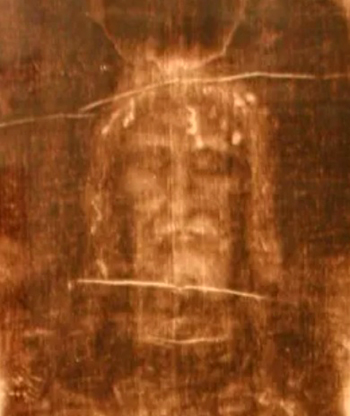
But He has much more than a little drum to attract men and captivate them. He has the beating of His Heart, the sacred and indescribable beating of His Heart.
What is real about this?
If we set aside the metaphor and enter directly into the matter, the reality is this. Let us consider another representation of Our Lord Jesus Christ. I refer to the one that most touches me – here something legitimately subjective and personal enters – and perhaps it is not the same depiction that touches you the most, for it is legitimate for each to have his own preference.
The depiction of Our Lord that most touches me is the Holy Shroud of Turin. It is not the Infant Jesus, lovingly held in Our Lady's virginal arms, but Our Lord crucified, nailed to the arms of the Cross by the cruel Roman centurions.
There He is. After His death, He was laid in a tomb. All the wounds of His Passion are visible. He is there, and I gaze at Him.
As I gaze at Him, grace – a created participation in the life of God – touches my soul as a Catholic, as it touches all Catholics. Grace touches me in particular way, conforming to my mentality and the path of virtue that, according to the plans of Providence, I should follow. Thus do I contemplate this aspect of God as seen in the Holy Shroud, which I appreciate and analyze with the objectivity of a sound mind – thanks be to God – seeing the reality as it is.
But what is expressive for me in this depiction, I consider in the particular way that was given to me to consider things. Thus, for me, as a man in the 20th century conceived in original sin, the Holy Shroud presents a certain form of beauty and attraction that it will not present to any other soul in the world because Our Lord manifests Himself in a particular way to each soul on earth.
Each soul is different from every other, for no two souls are equal. Thus, each soul is supreme in a certain way and has qualities that God gave to no other. No matter how humble and modest a soul may be, no matter that it is the size of one-tenth of a needle point, it receives qualities from God that He gives to no other soul. So also, Our Lord manifests Himself to each individual in consonance with what He has given him so that he will love God in that special way.
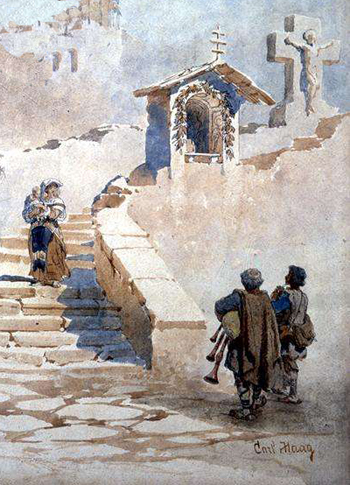
A man can unexpectedly see an image of Christ on the street & be moved
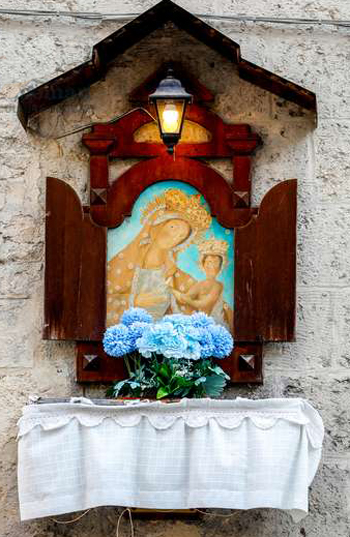
If we were to have a representation of Him here, we would all be seeing the same image, but each would be seeing something in accordance with the holiness that God wants from each of us. The Infant Jesus seeks out souls
And so it is Christmas night. Our Lord is in the manger. In Catholic cities, this manger is found in all the churches as well as other places – in public oratories, public nativity scenes, the display windows of stores. Whoever passes by will see Him. You can find such depictions in a thousand places.
A man is walking along and sees a certain representation of Our Infant Lord, which appeals to him in a special way. The depiction touches him and remains fixed in his soul. He stops and say, "My Lord and My God."
It does not always happen at that exact moment when he sees the depiction. A person stops and looks, and then walks home. Later, a moment comes when he is doing some everyday thing in his home. Let us say that it is late, night time, nearing the hour for bed. He is setting out his clothing for the next day or writing the last lines of a letter, or counting the change in his wallet. Or one of a thousand other such things – taking off his watch, preparing to go to sleep, etc.
Suddenly, by the action of grace – a grace that works with the characteristics of his nature – his memory presents to him that scene which he viewed earlier. And grace falls upon that individual. He stops then and says: "My Lord and my God."
This happens in different ways for each man. An aspect of Our Lord appears in a fully defined way in a subtle, complex way as a profound reality. A person experiences four or five Christmases, he sees the same statue, as well as other ones here and there. At a certain moment the images overlap in his memory. Suddenly, the individual sees one that has everything that he felt in all the others. "My Lord and my God. Here is Our Lord Jesus Christ as I love Him."
This is to say that the Infant Jesus visits all souls through grace. He no longer plays the role of one who receives visits, but of One who seeks after men. On these nights He seeks out in a special way all men, of all ages, languages, social conditions, and He says something that touches their hearts, also in a special way.
He Himself plays His drum to each one of us, like the little boy played his drum to Him.

Posted December 30, 2022





